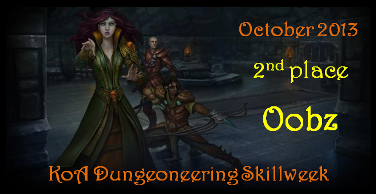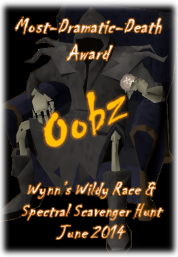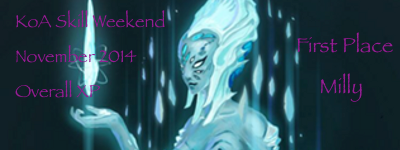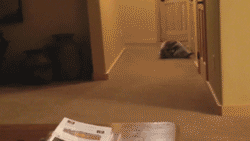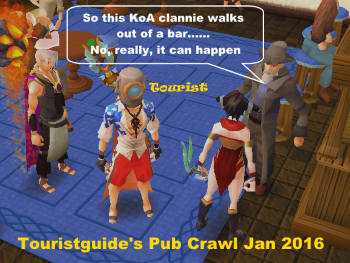[/size]
This guide is designed to be a fully comprehensive look at the Dungeoneering skill, and aims to be an updated/more general version of Kevinsaurus' excellent older guide to keying which you can view (here). Although this guide is excellent the skill and Runescape in a whole has changed a lot since its release, hopefully this will bridge any gaps that have developed.
Dungeoneering is in my opinion the most complex and demanding skill in Runescape, to complete floors efficiently it requires a large amount of knowledge and the ability to put this into practice quickly. Being generally a team based skill, communication plays a huge part, and being able to communicate information properly to your team is vital. Dungeoneering is also a ‘stupid mini-game'…apparently. If you believe that you should maybe stop reading and go back to woodcutting!
I won't insult you and tell you how to get to Daemonheim, and I will also assume you have a ring of kingship already. In order to begin a dungeon you need to bank all of your items except from your ring of kinship (there are exceptions but we can go into this later).
The first option (left click) on your ring of kingship is ‘Open party interface'. Clicking this will bring up the menu pictured below. Clicking form party will make you the leader of a party and allow you to choose floor number, complexity and who to invite.
Teams can vary between one and five people, with five giving the maximum amount of experience. The leader of the group will need to invite members to join them using either the invite button on the party interface or right clicking ‘invite' on the player while in Daemonheim.


Abandoned 1 – Floors 12-17
Furnished – Floors 18-29
Abandoned 2 – Floors 30-35
Occult – Floors 36-47
Warped – Floors 48-60

Floors are available to be completed in three sizes; small, medium and large. A small floor is up to 16 rooms, medium floors are up to 32, both of these are available in teams with only one member. Large floors can contain up to 64 rooms but can only be accessed with three or more members. The larger the floor the more difficult it will be to complete, especially with less members. This is why smaller teams tend to do smaller floors, with larges being reserved for 5 man or 4 man groups.
A floor's complexity can be chosen from 1-6. Each complexity unlocks more skills involved in the dungeon, as well as increasing the difficult of the monsters and bosses encountered. By dropping the complexity below 6, the floor will become easier, however there will be a significant experience penalty incurred and is generally not a good idea. The complexity of the floor can be chosen in the party interface menu, as shown above.
Prestige is a part of Dungeoneering that many people misunderstand however it is a relatively easy system.
Prestige plays a large part in determining how much experience is gained from completing a floor. Your prestige is equal to the number of floors you have completed between resets. Ideally this will always be maximum number of floors you are able to access. For example, if you can do floors 1-10 and you complete all of these, you will have 10 prestige. At this point you should reset, reducing your current process to 0 while keeping your prestige at 10. Resetting early will reduce the experience you gain for every floor as your prestige will be lower than it's possible maximum.
If you do a floor in a group of floors you have already completed without resetting you will suffer a 50% experience penalty to prevent people being able to repeat the highest level floors over and over without doing the lower level floors.









